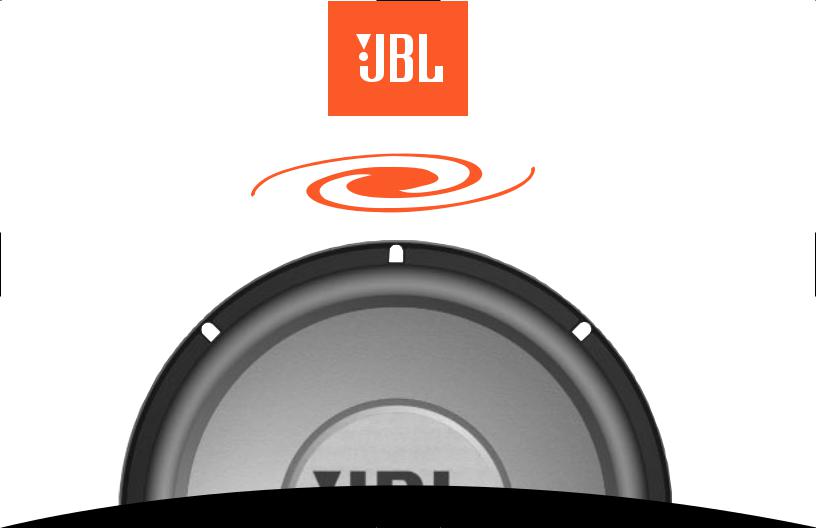Jbl DS120, DS100 Manual

D E C A D E ™
D S 1 0 0 , D S 1 2 0
GENUINE JBL

Thank you for choosing a JBL Decade™ Series subwoofer. Decade Series subwoofers are designed to suit a broad range of mobile-audio applications and can be used in a wide variety of enclosure types to produce extended, powerful bass in a limited amount of vehicle space. To ensure maximum subwoofer performance, we strongly recommend that installation be left to a qualified professional. Although these instructions explain how to install a JBL Decade Series subwoofer in a general sense, they do not show box construction details and exact installation methods for your particular vehicle. If you do not feel you have experience, do not attempt the installation yourself, but instead ask your authorized JBL dealer about professional installation options.
Remember to keep your sales receipt with this manual in a safe place so both are available for future reference.
A Few Words About Enclosures
Your Decade Series subwoofer requires an enclosure to realize its full lowfrequency response. The speaker’s design is flexible enough to produce exceptional results no matter whether you specify a small sealed, vented or bandpass enclosure. In vented and bandpass enclosures, box size and port tuning frequency will also help dictate the low-frequency performance and output capability of your system.
Your Decade Series subwoofer will also work in infinite baffle applications where there is no space or budget to build a box. Be aware that infinite baffle or “free air” mounting will reduce the power handling of any subwoofer compared to an application using an enclosure.
Finally, any deviation from recommended enclosure volumes or port dimensions should be made using dedicated enclosure-design software, such as JBL Speakershop™. If this type of software is not available to you, look for assistance on JBL’s Web site at www.jbl.com or from your authorized JBL dealer.
Your Car and Bass Reproduction
Depending on the size of the vehicle’s interior listening space, reproduced frequencies below 80Hz are actually boosted by nearly 12dB per octave as frequency decreases. NOTE: This effect, known as the vehicle’s transfer function, plays an important part in shaping the overall in-car response and is displayed graphically along with freespace response on the enclosed data sheet for your Decade Series subwoofer.
Enclosure Calculations and Building Boxes
Use the recommended box designs on the enclosed data sheet. Choose cabinet dimensions to fit your vehicle, but do not change the enclosure’s volume. Doing so will change the tuning frequency of the enclosure and may adversely affect final performance. If you cannot perform the necessary calculations yourself, please contact your authorized JBL dealer for help and for information about JBL Speakershop, a dedicated enclosuredesign software program for experienced car-audio enthusiasts.
In addition, there are a number of points you’ll want to keep in mind as you construct an enclosure:
1.Use 3/4" (19mm) MDF (medium-density fiberboard) or marine birch plywood to build an enclosure. Enclosures for 12" and larger subwoofers, or small subwoofers driven by high power amplifiers, should be constructed using 1" (25mm) material.
2.Seal all joints with glue and screws; do not use nails. We recommend “deck” or “zip” screws since they have coarse threads for better grip and don’t require pre-drilling holes. Once the box has been tested, seal all interior joints with silicone caulk.
3.Depending on the application, fill the enclosure according to the design you have chosen from the enclosed data sheet in one of three ways: zero-percent fill (i.e., no fill), 50-percent fill (i.e., 1"-thick polyfill sheets on all inside walls except where subwoofer is mounted), or 100-percent fill (i.e., entire box is stuffed with loosely packed polyester fiberfill).
2
